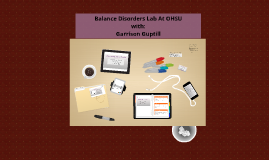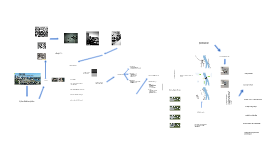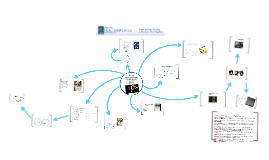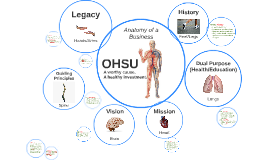OHSU PRONUNCIATION CURRICULUM
Transcript: Types of monitoring/assessment we employed: Observation of Learning Short Term Achievement Assessment Diagnostic Assessment Monitoring & Assessment Inexperience teaching pronunciation Difficulty connecting aspects of OHSU workplace into the curriculum Keeping LPs in sync Conflicting creative processes How about we try! Rationales for design decisions Spontaneous diagnostic, recognizing syllables Constraints Guiding Theories and Principles Kelli Byrd -Original Idea -Medical Terminology Focus Group (Created by OHSU managers) -To speak slowly -Not to speak loudly -Cultural differences in tone and speed -Wanted students to be equipped with strategies for communication breakdown Goals Some frustration, but overall a good challenge for great collaborators! Challenges Topic/Focus Introduction and Syllables Lexical Stress Lexical Stress in Sentences and Discourse Intonation (Part 1) Intonation (Part 2) Articulation Review Culmination Principles Objectives The #ongoing curriculum design process offered... Thought groups, pauses, blends, contractions, deletions, additions References Avery, P. & Ehrlich, S. (2009). Teaching American English Pronunciation. Oxford: Oxford. Celce-Murcia, M., Brinton, D., Goodwin, J., & Griner, B. (2010). Teaching pronunciation: A course book and reference guide. Cambridge: Cambridge University Press. Cowal, J. (2013). Teaching Pronunciation. [PowerPoint slides]. Retrieved from: https://d2l.pdx.edu/d2l/lp/homepage/home.d2l?ou=374218 English Language Learner Program (n.d.) Retrieved from http://www.ohsu.edu/xd/about/services/human-resources/career-and-workplace- enhancement-center/employee-development/programs-and-classes/upload/CWE-Center- ELL-brouchure.pdf Gass, S., & Selinker, L. (1994). Second language acquisition: An introductory course. New York: Routledge. Gerhiser and Wrenn. (2007). Second language pronunciation assessment handout packet. Retrieved from: http://teachingpronunciation.pbworks.com/f/Pronunciation+assessment+packet+.pdf Gilbert, J. B. (2013). Clear speech: pronunciation and listening comprehension in North American English. New York: Cambridge. Kachru, B. (1992). The other tongue: English across cultures. Chicago: University of Illinois Press. Morley, J. (1994). A multidimensional curriculum design for speech-pronunciation. In J. Morley (Eds.), Pronunciation pedagogy and theory: New views, new directions (66-91). Virgina: TESOL, Inc. Nation, I.S.P., & Macalister, J. (2010). Language curriculum design. New York: Routledge. Wilner, L.K. & Feinstein-Whittaker, M. (2007). Medically speaking rules: Rules for using linguistic elements of speech. Owings Mills: Successfully Speaking. Context Brainstorm Encore! Encore! Career and Workplace Enhancement Center (CWE Center) 10 student capacity Meets once a week for 8 weeks 75 minutes each session Multi-level classes Diverse Learners Theories 1.) Kelli Byrd 2.) Focus group document 3.) Survey 4.) Julie's previous teaching at OHSU Multimedia ready classroom Small class size = Strong classroom community Students have a high level of motivation (All skills from previous lesson will be applied) (All skills from previous lesson will be applied) Possibilities Empower learners with strategies to employ when communication breakdown occurs. (1b; 5b; 6a; 8b) Enhance and improve learner production of English sounds and prosody. (2a; 2b; 3b; 4a; 6b, 8a, 8b) Equip students with the ability to recognize prosodic differences in spoken English. (1a; 3a; 4b; 4c; 5a, 8b) Each session is structured as follows: Review Presentation Highly Controlled Practice Guided Practice Extension/Assessment Wrap-Up Example Lesson Plan Skills Time Restricted Enrollment Waning attendance at the end No attendance policy MA TESOL students are teachers Frequency Language System Strategies and Autonomy Motivation Comprehensible Input Output Feedback ANY QUESTIONS? OREGON HEALTH AND SCIENCE UNIVERSITY Original Survey JOSHUA REED JULIE NELSON JAMES MITCHELL Directly relate to goals Aim for 80% accuracy Used as objectives for lesson plans Suprasegmentals (skills) Goals and Objectives Scope and Sequence Declarative intonation, interrogative intonation, attitudes Emphasizing content words and de-emphasizing structure words Constraints and Possibilities Week 1 2 3 4 5 6 7 8 OHSU HR videos create an authentic link between lessons and workplace. OHSU videos provide evidence that a native like accent is less important than mastery of prosodic features Activities reflect objectives and goals Needs Assessment Challenges & Rationales Kelli Byrd and the Focus Group What do you imagine an OHSU ELL class to be like? Who are the students? Who are the teachers? Who organizes the classes? Where are the classes? What do students want to learn? Why do they need/want ESL? Sources of Data Collection Lexical stress in single words, differentiation Rate, pitch, volume, variety, enunciation, articulation A Poor Pronunciation Lesson World Englishes Sociocultural Theory #OHSU PRONUNCIATION

















